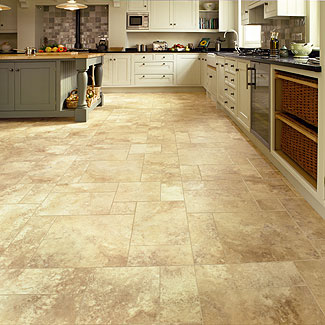Best Flooring Options For Your Kitchen
 |
The kitchen is a place where you not only want a spectacular look, but is also the room that everyone spends the most dollars improving.
There are so many articles that lead people into using or not using just about any type of flooring. If you actually read them all, it seems the only solution is concrete! Seriously though, here are some brief pros and cons of different types of flooring from the manufacturer. Take the opinions you hear right from the source vs. what others think or feel. Whether it's engineered or solid, hardwood is perfectly fine to put into the kitchen. The pros: a consistent look with the rest of the home (especially in open kitchen floor plans), a richness in accenting with cabinetry and of course, the beauty |
||||||||||||||
| of natural wood. The cons: water cannot sit for long periods of time. "Water" equals anything over 12 ounces. Why someone would have the equivalent of a full glass of water just sitting for days is something I often wonder about! | |||||||||||||||
| Laminate |
|||||||||||||||
| It’s a great choice for kitchens, and is more scratch resistant than some hardwoods. It also offers the benefit of being less expensive and perfect for the do-it-yourselfer. Laminates also now have many different looks and styles, anywhere from hand-scraped to exotic woods to faux tile. Don't mistake the old Pergo flooring with what is available today. The cons: about the same as hardwood - don't leave a large amount of sanding water on the floor for days. | |||||||||||||||
Tile & Stone Vinyl Tile |
 |
||||||||||||||
| Cork Much has been said about cork. Every manufacturer okays cork installation for the kitchen. The pros: it has a unique look, it’s eco-friendly and it possesses durability and warmth. Also with the floating series, it's another perfect DIY project to save money on labor costs. The cons: well, of course, the cost (higher priced than both wood and laminate) and the same no standing water rule we spoke about in the beginning. |
|||||||||||||||
Bamboo |
|||||||||||||||
|
|||||||||||||||
| www.qualityflooring4less.com | |||||||||||||||


